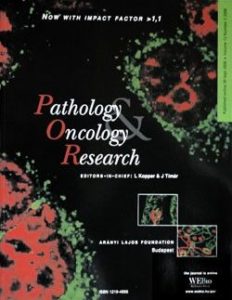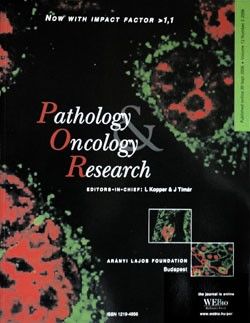Age and Gender Specific Lung Cancer Incidence and Mortality in Hungary: Trends from 2011 Through 2016.
Lilla Tamási, Krisztián Horváth, Zoltán Kiss, Krisztina Bogos, Gyula Ostoros, Veronika Müller, László Urbán, Nóra Bittner, Veronika Sárosi, Aladár Vastag, Zoltán Polányi, Zsófia Nagy-Erdei, Andrea Daniel, Balázs Nagy, György Rokszin, Zsolt Abonyi-Tóth, Judit Moldvay, Zoltán Vokó and Gabriella Gálffy (Pathology & Oncology Research, doi: 10.3389/pore.2021.598862)

Objective
No assessment was conducted describing the age and gender specific epidemiology of lung cancer (LC) prior to 2018 in Hungary, thus the objective of this study was to appraise the detailed epidemiology of lung cancer (ICD-10 C34) in Hungary based on a retrospective analysis of the National Health Insurance Fund database.
Methods
This longitudinal study included patients aged ≥20 years with LC diagnosis (ICD-10 C34) between January 1, 2011 and December 31, 2016. Patients with different cancer-related codes 6 months before or 12 months after LC diagnosis or having any cancer treatment other than lung cancer protocols were excluded.
Results
Lung cancer incidence and mortality increased with age, peaking in the 70–79 age group (375.0/100,000 person-years) among males, while at 60–69 age group for females (148.1/100,000 person-years). The male-to-female incidence rate ratio reached 2.46–3.01 (p < 0.0001) among the 70–79 age group. We found 2–11% decrease in male incidence rate at most age groups, while a significant 1–3% increase was observed in older females (>60) annually during the study period.
Conclusion
This nationwide epidemiology study demonstrated that LC incidence and mortality in Hungary decreased in younger male and female population, however we found significant increase of incidence in older female population, similar to international trends. Incidence rates peaked in younger age-groups compared to Western countries, most likely due to higher smoking prevalence in these cohorts, while lower age LC incidence could be attributed to higher competing cardiovascular risk resulting in earlier mortality in smoking population.
